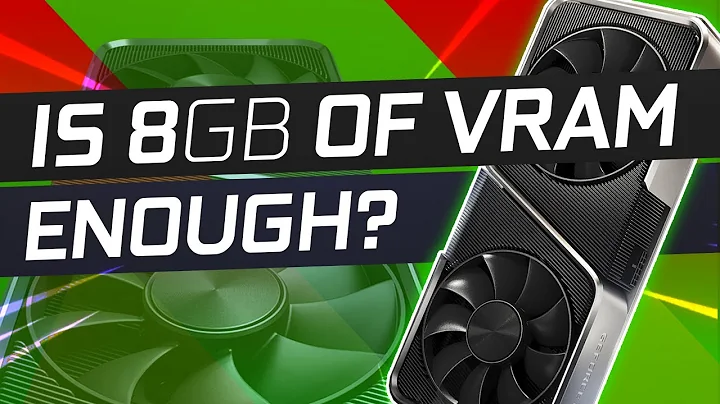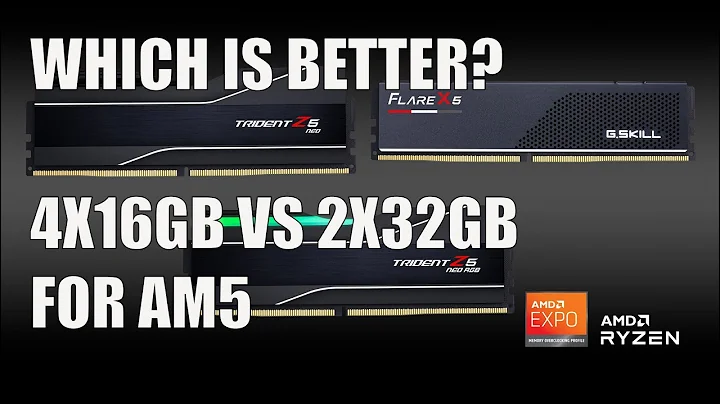Unleashing Next-Generation Gaming: The Revolutionary PlayStation 3
Title: The Revolutionary PlayStation 3: Unleashing Next-Generation Gaming
Table of Contents:
- Introduction
- The Vision Behind PlayStation 3
2.1 The Most Advanced GPU
2.2 Real-Time Movie Quality Graphics Synthesis
2.3 Harnessing the Power of the Cell Processor
- Overcoming the Beauty vs. Speed Challenge in Graphics
- The RSX: The Heart and Soul of the PlayStation 3
4.1 Programmable Shading Processors
4.2 128-Bit Floating Point Pixel Precision
4.3 2K by 1K Resolution
4.4 The Power of System Architecture
- Demonstrating the Next-Generation GPU
- The Importance of Color Precision
- Pushing the Boundaries with High Dynamic Range
- Embracing Higher Resolutions for the Digital Era
- Unleashing Unprecedented System Performance
- Real-Time Demonstration: Unreal Engine 3 on PlayStation 3
- Conclusion
The Revolutionary PlayStation 3: Unleashing Next-Generation Gaming
🎮 Introduction
The world of gaming was about to witness a remarkable transformation with the introduction of the PlayStation 3. After years of dedicated research and development, Sony and NVIDIA came together to bring forth the most significant digital consumer device of the decade. This article delves into the exceptional features and technologies powering the PlayStation 3, revolutionizing the gaming landscape.
The Vision Behind PlayStation 3
With ambitious goals in mind, the PlayStation 3 was designed to be the pinnacle of gaming consoles. Its visionary leader, Ken Kutaragi, aimed to create a GPU that would surpass anything ever seen before, enabling real-time synthesis of movie-quality graphics. Additionally, the PlayStation 3 was to fully utilize the immense processing power of the Cell processor, setting new benchmarks for gaming consoles.
The Most Advanced GPU
The graphics processing unit (GPU) of the PlayStation 3, known as the RSX (reality synthesizer), was a masterpiece of engineering. It featured an extraordinary number of programmable shading processors, capable of simultaneously performing 136 shader operations. This unprecedented level of computational horsepower allowed for rendering rich and intricate virtual worlds.
Pros:
- Unmatched performance with 136 simultaneous shader operations.
- Enables real-time synthesis of movie-quality graphics.
Real-Time Movie Quality Graphics Synthesis
Traditionally, rendering movie-quality graphics required hours of processing on farms of servers. The PlayStation 3 aimed to overcome this barrier by bringing movie-like image quality to Game consoles at a stunning 60 frames per Second. The RSX's programmable shading processors played a crucial role in articulating subtle material surfaces, such as brushed aluminum or silk, with incredible realism.
Pros:
- Brings movie-like image quality to game consoles at 60 frames per second.
- Provides realism by articulating subtle material surfaces.
Harnessing the Power of the Cell Processor
The Cell processor's incredible processing power and throughput were fully utilized in the PlayStation 3. Combined with the RSX, the Cell processor allowed for the synthesis of beautiful and dynamic worlds. The system architecture embraced the stunning bandwidth between the Cell processor and the RSX, enabling seamless communication and delivering an unparalleled gaming experience.
Overcoming the Beauty vs. Speed Challenge in Graphics
Computer graphics have always faced the challenge of balancing beauty and speed. Movie graphics, while visually stunning, take hours to render on CPU farms. Game consoles, on the other HAND, deliver lightning-fast performance but are limited in visual quality. The PlayStation 3 aimed to bridge this gap by offering lightning-fast performance while delivering movie-quality graphics.
The RSX: The Heart and Soul of the PlayStation 3
At the core of the PlayStation 3 was the RSX, packing an array of groundbreaking technologies. Its development represented over 1,500 man-years of engineering and marked a significant leap forward in graphics processing.
Programmable Shading Processors
The RSX featured a multitude of programmable shading processors, allowing for real-time computation of each pixel's appearance. By utilizing programmable shading processors instead of fixed-function texture mapping, the PlayStation 3 could articulate subtle material surfaces visible pixel by pixel, truly immersing players in lifelike environments.
128-Bit Floating Point Pixel Precision
To express the incredible subtleties in lighting and visual details, the PlayStation 3 introduced 128-bit floating point pixel precision—far exceeding the limitations of the 32-bit precision found in previous consoles. This significant upgrade allowed for the articulation of high dynamic range lighting, enabling players to experience the brightness of highlights and subtle details in shadows simultaneously.
2K by 1K Resolution
In the digital era, higher resolutions were becoming the norm. The PlayStation 3 met this demand by offering a resolution of 2K by 1K, equivalent to the resolution found in movies. This increase in resolution, combined with the RSX's power, provided users with stunning visuals on par with the best digital displays available.
The Power of System Architecture
The architecture of the PlayStation 3 ensured unparalleled performance. With a staggering 35 GB per second of bandwidth between the Cell processor and the RSX, massive amounts of data could be transferred at lightning speed. Coupled with the ability to process 100 billion shader operations per second and render pixels to anywhere in the system memory, the PlayStation 3 offered an unmatched gaming experience.
Demonstrating the Next-Generation GPU
To showcase the capabilities of the RSX, a real-time demonstration was performed using the Unreal Engine 3. The demo displayed unprecedented realism, with per-pixel lighting, shadowing, and intricately rendered environments. This brief glimpse into the possibilities of the PlayStation 3 left the audience in awe.
The Importance of Color Precision
In addition to the groundbreaking graphics capabilities, the PlayStation 3 recognized the significance of color precision. By introducing 128-bit floating point precision for each pixel, the console could express incredibly subtle color variations and high dynamic range lighting accurately. This level of detail brought unparalleled realism to gaming experiences.
Pushing the Boundaries with High Dynamic Range
High dynamic range (HDR) imaging became a key element in delivering lifelike graphics. While conventional systems were limited to 8-bit graphics, the PlayStation 3's floating point precision allowed it to achieve exceptional contrast and detail. Environments illuminated by bright highlights and deep shadows became a reality, engrossing players in visually stunning worlds.
Embracing Higher Resolutions for the Digital Era
Digital displays were evolving rapidly, demanding higher resolutions. The PlayStation 3 met this demand head-on, ushering in an era of 2-megapixel gaming. With movie-like resolutions coupled with technologies like Blu-ray, the PlayStation 3 transformed the living room into an immersive digital playground like never before.
Unleashing Unprecedented System Performance
The PlayStation 3's jaw-dropping system performance set a new standard for gaming consoles. Its 100 billion shader operations per second, 51 billion dot products per second, and two teraflops of processing power outperformed even the most advanced PCs on the market. Paired with an ample 512 megabytes of graphics render memory, the PlayStation 3 delivered unrivaled performance.
Real-Time Demonstration: Unreal Engine 3 on PlayStation 3
A live demonstration of Unreal Engine 3 running on the PlayStation 3 showcased the console's remarkable capabilities. Real-time rendering with per-pixel lighting, shadowing, and complex effects left the audience in awe. Epic Games' Unreal Engine 3 demonstrated the power of the PlayStation 3 and the possibilities it offered game developers.
Conclusion
The PlayStation 3's launch marked a revolutionary chapter in gaming history. Sony and NVIDIA's partnership brought forth a console that surpassed all expectations, delivering a gaming experience previously reserved for the silver screen. From the ground-breaking GPU architecture to the astonishing system performance, the PlayStation 3 set new standards for realism and immersion. With its remarkable capabilities, the PlayStation 3 changed the gaming landscape and left an indelible mark on the industry.
Highlights:
- The PlayStation 3 introduced the most advanced GPU, capable of real-time movie-quality graphics synthesis.
- Programmable shading processors allowed for unprecedented realism in articulating material surfaces.
- The console embraced features like high dynamic range and higher resolutions, revolutionizing visual fidelity in gaming.
- The PlayStation 3's powerful system architecture and extraordinary performance set a new bar for gaming consoles.
- A live demonstration of Unreal Engine 3 showcased the console's capabilities and left audiences amazed.
FAQ:
Q: How was the PlayStation 3 different from previous gaming consoles?
A: The PlayStation 3 brought real-time movie-quality graphics, thanks to its advanced GPU and programmable shading processors. It also harnessed the power of the Cell processor and offered higher resolutions and color precision, pushing the boundaries of visual fidelity in gaming.
Q: What were some of the key features of the RSX GPU in the PlayStation 3?
A: The RSX GPU in the PlayStation 3 featured programmable shading processors, 128-bit floating point pixel precision, and support for 2K by 1K resolution. It also boasted an impressive system architecture and performance advantages, setting it apart from previous gaming consoles.
Q: How did the PlayStation 3 demonstrate the concept of high dynamic range in graphics?
A: By introducing 128-bit floating point pixel precision, the PlayStation 3 enabled high dynamic range imaging. This technology allowed the console to accurately represent both bright highlights and subtle details in shadows, delivering a more realistic and immersive gaming experience.
Resources:
- Sony: www.sony.com
- NVIDIA: www.nvidia.com
- Unreal Engine: www.unrealengine.com
 WHY YOU SHOULD CHOOSE TOOLIFY
WHY YOU SHOULD CHOOSE TOOLIFY
































